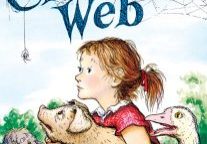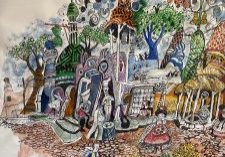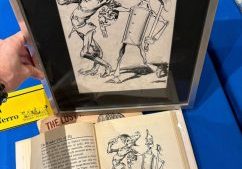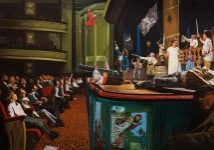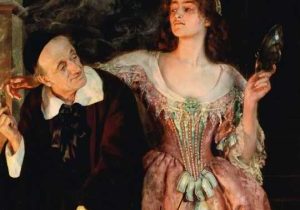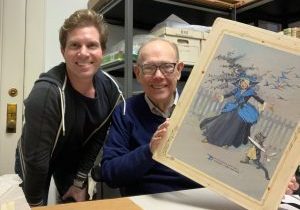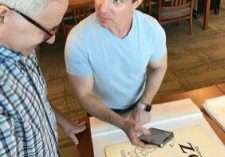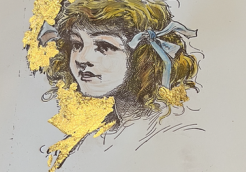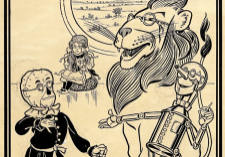‘BUY IT NOW’ – THE NEW DISCOVERY OF OLD OZ ART
The following story was first published in the Spring 2020 edition of The Baum Bugle, the journal of the International Wizard of Oz Club. If you aren’t yet a member, what are you waiting for?
When I launched the “Lost Art of Oz” project in the fall of 2018, my first goal was to make a list of all the original illustrations known to survive. That continuing journey began with a “deep dive” through auction brochures, sales records, and library catalogues. Even more instrumental were the remembrances and expertise of keen collectors. Over the years, many had informally made notes about the current whereabouts of that art, much of it drawn over a century ago by master illustrators John R. Neill and W.W. Denslow.
The search quickly revealed that most of the surviving original Oz drawings by Neill have one of two origins: they are either those saved through the preservation efforts of collectors, Fred Meyer, Lucy Hart, Irene Fisher, and most significantly Dick Martin in the late 1950s, or they are the last of the drawings still owned by publisher Reilly & Lee when the firm was sold to the Henry Regnery Company in 1959. This second group was sold by Peter Glassman of Books of Wonder in the early 1980s, and all the art has been subject to a myriad of changing hands in the succeeding decades.
As a result, the discovery of a major “new” piece—its survival hitherto unknown—always raises excitement about the possibility of future discoveries.
One such treasure was found in 2016 by collector and Oz Enthusiast blogger, Bill Campbell. Bill is an artist and a lifelong Oz fan. His focus has always been on collecting the original books and artwork from the series.
As Bill remembers:
“I have a general habit, after arriving home from work, of browsing through eBay and looking at searches related to my various Oz interests. On this occasion, I had barely started looking when an illustration popped up at an attractive ‘Buy it Now’ price. I recognized it immediately as a double page spread of Scraps and the Scarecrow drawn by John R. Neill for The Patchwork Girl of Oz. After a moment of being a bit stunned to see it, I realized I’d have to act quickly. It appeared to have just been listed, and I knew it wouldn’t be available for long!

“My partner, Irwin, was upstairs. With a shout of, ‘We’re spending money!’ I ran up with the iPad to show him the drawing. His response was simply, ‘Make sure it’s what you think it is!’
After a quick second look, I crossed my fingers and made the purchase.
It was sold by an older gentleman somewhere on the east coast, possibly Rhode Island. I ended up speaking to him over the phone to arrange shipping, but I could learn nothing more about where the drawing had come from. Apparently, he didn’t have any others. He didn’t seem to be an Oz collector.
When the piece arrived a week or so later, it was immediately obvious that it was the real deal. As always, it was a joy taking in Neill’s artistry. Though it was printed in color in the book, the original drawing is crafted solely in pen and ink. The scale of Neill’s Oz work is very impressive, with the drawing measuring a good 13” tall by 22” wide. This increase in size over the printed version in the book makes the artist’s pen work and graceful line all the more impressive. Neill’s artwork in the Oz series was a major part of why I fell in love with the books as a child, and it’s always a thrill to see an original example. Another lucky stroke: Neill drew many of his early double paged drawings on separate boards, but for whatever reason, he opted here to draw the Scarecrow and Scraps together. Truly an inseparable duo!
The board also had a strong odor of old cigarette smoke. But after allowing it to air out for another week or two, it went to the framer. It has been beloved on our wall ever since.”
Much of the original Neill artwork for The Patchwork Girl of Oz is known to survive, yet many of the most prominent illustrations are still at large. The discovery of such a significant piece spurs the imagination: who might have had it for the past 100 years? Could a former employee of Reilly & Lee have brought it home? Did a store clerk keep it from a window display? We may never solve the mystery, but we can dream that more Oz treasures are out there just waiting to be found.


